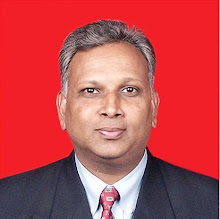
Sudheendra Kulkarni
A successful Indian businessman—indeed, one of the most successful in the telecom sector—had this to say after his return from Beijing, where he had gone to watch the Olympics. “I felt depressed when I came back to Delhi. Beijing is a miracle city, a truly world-class city. The wonder is, all its transformation has taken place in just the last four years. In contrast, Delhi is miles behind.”
Just a few days earlier, I had met another businessman, a struggling but dynamic contractor engaged in building a small stretch of the national highway in Bundelkhand in Uttar Pradesh. “I feel depressed when I come to Delhi,” he said. “Delhi is shining by keeping places like Bundelkhand in the darkness of poverty and backwardness. Delhi grabs everything for itself, whereas our region is a picture of neglect—no roads, no hospitals, no proper schools and colleges, no industries, no employment. I sometimes feel that we Bundelkhandis, who produced patriots like Rani Laxmibai of Jhansi, should revive the spirit of 1857 and revolt against this discrimination.”
Two disquieting observations, but there is merit in both. Our national capital has a long, long way to go before it can match Beijing in world-class infrastructure, civic amenities, efficient local governance and global self-projection. Equally true is the fact that Bundelkhand and many other deprived and neglected parts of India are way behind Delhi in terms of even basic infrastructure and services. Of course, in recognising the disparity between Delhi and Bundelkhand, we should not be oblivious to the disparity within Delhi itself. Large parts of its newly populated areas—the Delhi of jhuggi-jhopadis where distressed farmers and other ravaged sections of the rural poor from the under-developed regions in north India have migrated to—are condemned to have poor housing, wretched educational and health services, inadequate water supply and, not the least, squalid and disease-breeding environs. This internal disparity is the stark truth about almost every other Indian city.
India’s development strategy should be attentive both to China’s stupendous progress and to the stultifying stagnation of the many Bundelkhands spread across our land. We must improve the global profile of our national capital and other major Indian cities. As India’s gateways to the world, they must present the picture of a nation on the rise, a proud nation of over one billion people that is confidently seeking its rightful place in the world. At the same time, with even greater zeal, we should work for the speedy and all-round development of those regions of our country and those sections of our society that have badly lagged behind.
Can the two priorities be pursued simultaneously? Yes, certainly. In any case, there is no alternative. There is simply no way one priority can be sacrificed for the sake of the other. Balancing the two is a difficult task, even for China. A perusal of the speeches and policy statements of China’s current crop of leaders clearly shows that they are deeply concerned over the social and geographic imbalances in their country’s development. They are aware that failure to properly address these imbalances could cause serious political and social instability. In India, we are already seeing many worrying manifestations of this developmental divide.
How can the twin priorities be addressed in tandem? The answer lies principally in re-awakening a strong sense of national identity, national pride and national vision. The idea that India is one and indivisible, the burning desire to see that our Motherland attains greatness and glory in the world, and, simultaneously, the deep sensitivity and commitment to ensure that every region of India and every section of our diverse society benefits from India’s development—this is what constitutes the true spirit of nationalism today.
China’s meteoric rise is not due to, but in spite of, communism. It is due to incandescent patriotism, an uncompromising sense of national unity and determination to surpass the advanced countries in everything—be it in Olympic gold medals, Olympic-sized airports and other modern infrastructure, the health profile of its citizens or in any other parameter of development. It is this spirit of nationalism, among all age-groups of the population, that is feeding China’s determination to become the greatest nation on the planet.
India has a major advantage over China insofar as we are a democracy and a free society. Democracy can yield a richer fruit of development than a totalitarian system. But India’s potential advantage in this regard has been considerably lost due to a weakened sense of nationalism, evident in the hideous din of the forces of dynasticism, casteism, communalism, regionalism, terrorism and separatism. The problem is further worsened by poor governance right from the central to local levels and the growing tendency among political parties to think only about their own narrow vote-banks. As a result, we lack an integral, robust and long-range national vision, which alone can help India attain greatness globally and address the problems of unbalanced development domestically. Chinese leaders—from Deng Xiaoping to Hu Jintao—have displayed a broad continuity of nationalist vision over the past three decades. India during the same period has seen only episodic manifestation of that vision at the leadership level. When will India have a succession of nationalist leaders who will re-unite a divided India and re-energise the entire population with a common vision and common achievement

No comments:
Post a Comment